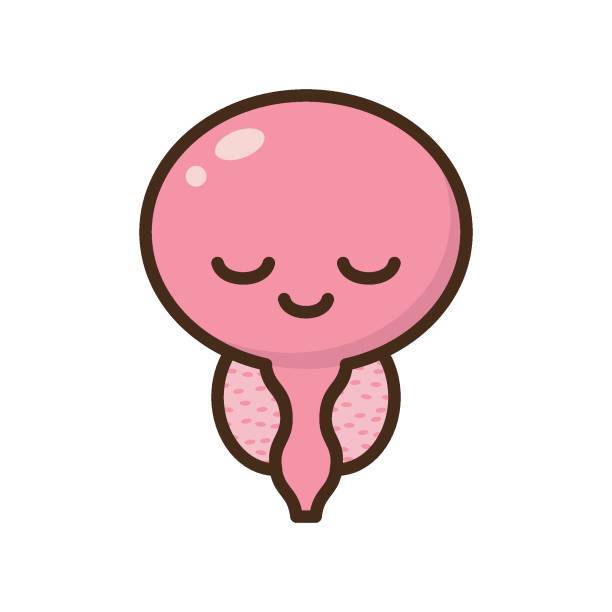Restoring Pelvic Health and Function
Restoring Pelvic Health and Function

A prostatectomy, the surgical removal of the prostate gland, is a common treatment for prostate cancer. While this surgery can be life-saving, it often brings about significant challenges to pelvic health, especially in relation to bladder control, sexual function, and pelvic floor muscle strength. Understanding the importance of pelvic floor rehabilitation post-surgery is crucial for optimal recovery.
In this blog post, we’ll explore how prostatectomy affects pelvic health, common complications, and how pelvic floor rehabilitation can help improve recovery outcomes and overall quality of life.
The Role of the Pelvic Floor
The pelvic floor consists of muscles, ligaments, and connective tissues that form a supportive structure at the base of the pelvis. These muscles help control the bladder, bowel, and sexual function. After a prostatectomy, the pelvic floor muscles can be affected in several ways, particularly due to nerve damage, muscle weakness, and the physical changes resulting from the surgery.
The prostate is closely connected to the urethra (which carries urine from the bladder) and is integral in controlling urination and sexual function. When the prostate is removed, the surrounding muscles and tissues may become weakened, leading to complications such as urinary incontinence, erectile dysfunction, and reduced pelvic stability.
How Prostatectomy Affects Pelvic Floor Health
1. Urinary Incontinence
One of the most common challenges men face after prostatectomy is urinary incontinence, or the inability to control the bladder. This occurs when the pelvic floor muscles and the sphincter muscles (which control the release of urine) are weakened or damaged during surgery.
- Stress incontinence, where urine leaks with physical activity like coughing, sneezing, or lifting, is common.
- Urgency incontinence, or a sudden, overwhelming need to urinate, may also occur as the bladder and pelvic floor muscles work to adjust to the changes caused by the surgery.
The pelvic floor muscles play a vital role in supporting the bladder and controlling urine flow, and rehabilitation is key to restoring their function.
2. Erectile Dysfunction
Another common complication after prostatectomy is erectile dysfunction (ED). The nerves responsible for sexual arousal and erection are located near the prostate and may be damaged during surgery. This can lead to difficulty achieving or maintaining an erection.
The pelvic floor muscles are integral in sexual function, so if these muscles are weakened or compromised, it may further exacerbate sexual dysfunction.
3. Pelvic Floor Weakness and Instability
After prostatectomy, men may experience a weakened pelvic floor, leading to muscle imbalances and postural issues. The pelvic floor muscles, along with the core muscles, work together to provide stability to the lower back, hips, and pelvis. Weakness in these muscles can affect overall pelvic stability, leading to discomfort, pain, and difficulty with activities like sitting, standing, and walking.
4. Bowel Function
Although less common, some men may experience bowel dysfunction after prostatectomy due to changes in pelvic floor muscle strength. The pelvic floor plays a role in bowel control, and weakness in the muscles can contribute to difficulty holding bowel movements or increased urgency.
The Role of Pelvic Floor Rehabilitation
Pelvic floor rehabilitation is a vital component of recovery after prostatectomy. The goal of rehabilitation is to restore pelvic floor function, address incontinence issues, improve sexual health, and enhance overall pelvic stability. Pelvic physiotherapists specialize in designing individualized treatment plans to help men regain strength, control, and confidence.
1. Pelvic Floor Muscle Strengthening
The cornerstone of pelvic rehabilitation is pelvic floor muscle strengthening. This is achieved through exercises that target the pelvic floor muscles, such as Kegel exercises. These exercises help improve the strength and coordination of the pelvic floor muscles, which can improve bladder control and prevent incontinence.
- Kegel exercises involve contracting and relaxing the pelvic floor muscles, which helps restore muscle tone and function.
- A pelvic physiotherapist can provide guidance on how to perform these exercises correctly, ensuring that the right muscles are engaged.
Strengthening the pelvic floor can also help alleviate urinary incontinence, reduce post-surgical pelvic pain, and improve sexual function.
2. Biofeedback and Pelvic Floor Awareness
Biofeedback is a technique used to help individuals become more aware of their pelvic floor muscles and learn how to activate and relax them effectively. Small sensors are placed on the body to provide real-time feedback on muscle activity.
- Biofeedback can be particularly useful for men recovering from prostatectomy, as it helps them gain awareness of their pelvic floor function and teaches them how to control their muscles more effectively.
- This technique can also help in identifying muscle imbalances and retraining the pelvic floor to function optimally.
3. Manual Therapy and Scar Tissue Management
Post-surgical scar tissue can develop in the pelvic region after prostatectomy, leading to restricted movement and discomfort. A pelvic physiotherapist may use manual therapy techniques to release tension and break up scar tissue in the pelvic floor muscles and surrounding tissues.
- Manual therapy may involve gentle myofascial release, soft tissue mobilization, and stretching exercises to improve the flexibility and mobility of the pelvic region.
- Addressing scar tissue can help reduce pelvic pain and improve blood flow to the area, aiding in the healing process.
4. Bladder and Bowel Retraining
Pelvic rehabilitation after prostatectomy also focuses on bladder and bowel retraining. This involves techniques to help improve control over urinary and bowel function. A pelvic physiotherapist can guide men through strategies such as timed voiding, bladder training, and pelvic floor relaxation techniques.
- Bladder training helps increase the time between bathroom trips and reduces urgency, while timed voiding establishes a consistent schedule for bathroom visits.
- For men with bowel dysfunction, techniques like bowel retraining exercises and dietary recommendations may be incorporated to improve bowel control and reduce urgency.
5. Sexual Health Recovery
Pelvic floor rehabilitation plays an important role in sexual health recovery after prostatectomy. While damage to the nerves involved in erectile function is common, improving the function of the pelvic floor muscles can help enhance erectile function and overall sexual satisfaction.
- Pelvic physiotherapy can include nerve stimulation techniques, muscle relaxation exercises, and manual therapy to improve circulation to the pelvic region and support erectile function.
- Therapy can also address psychological factors, such as anxiety or stress, that may affect sexual health post-surgery.
The Benefits of Pelvic Floor Rehabilitation After Prostatectomy
Pelvic floor rehabilitation offers a host of benefits for men recovering from prostatectomy. Some of the key advantages include:
- Improved bladder control and reduced incidence of incontinence.
- Enhanced sexual function and improved erectile function.
- Reduced pelvic pain and improved mobility.
- Better postural alignment and pelvic stability.
- Improved mental and emotional health, as patients regain confidence and control over their pelvic health.
Conclusion
Pelvic floor rehabilitation is a crucial aspect of recovery after prostatectomy. By focusing on pelvic floor muscle strengthening, biofeedback, manual therapy, and bladder and bowel retraining, men can regain control over their pelvic health and enhance their overall well-being. While prostatectomy is a life-changing surgery, working with a pelvic physiotherapist can greatly improve recovery outcomes and help men return to a fulfilling, active lifestyle.
If you’ve had a prostatectomy, don’t hesitate to explore the benefits of pelvic floor rehabilitation. With the right treatment plan, you can recover stronger, healthier, and more confident in your pelvic health.


